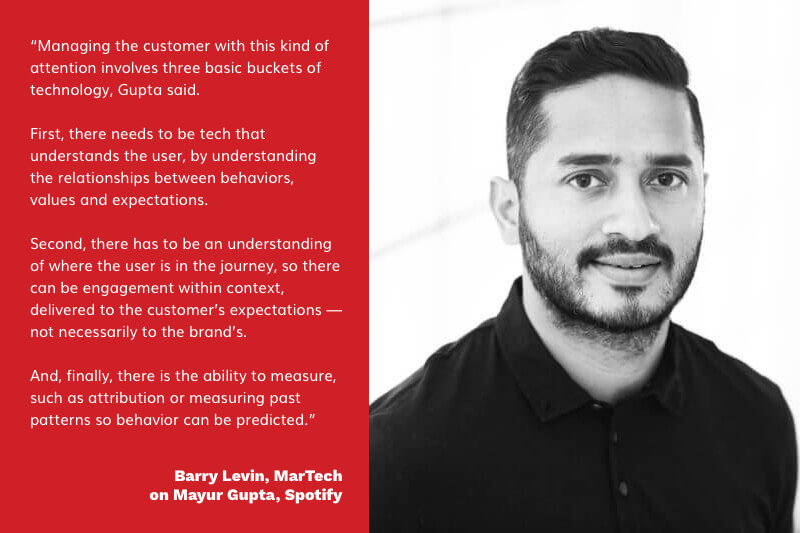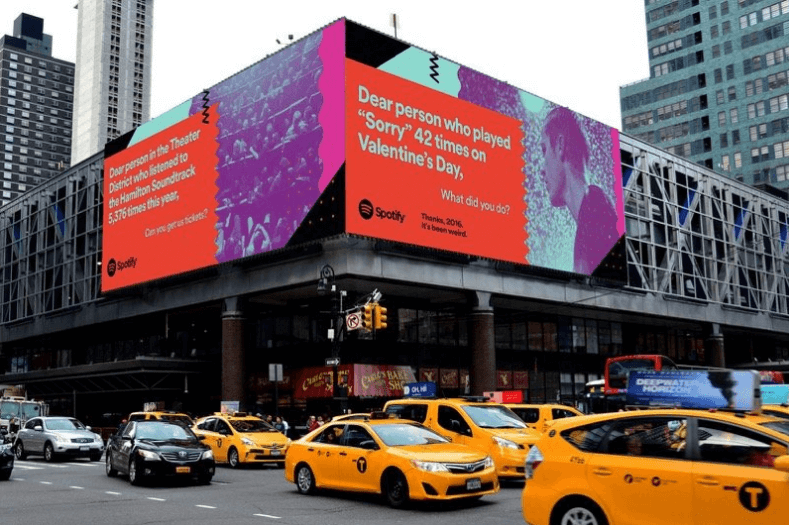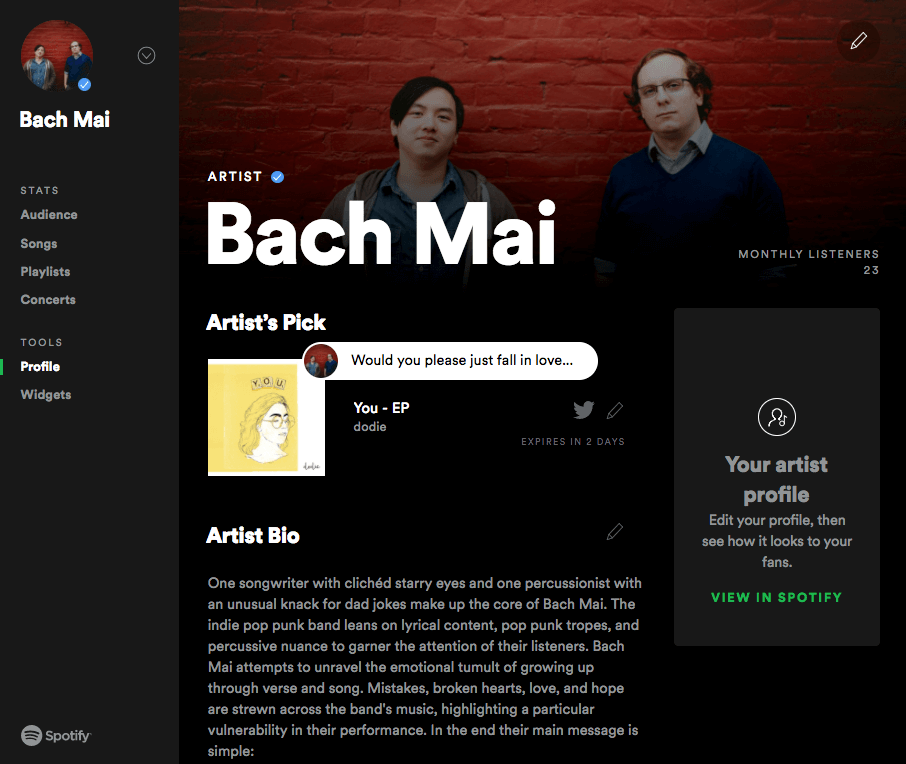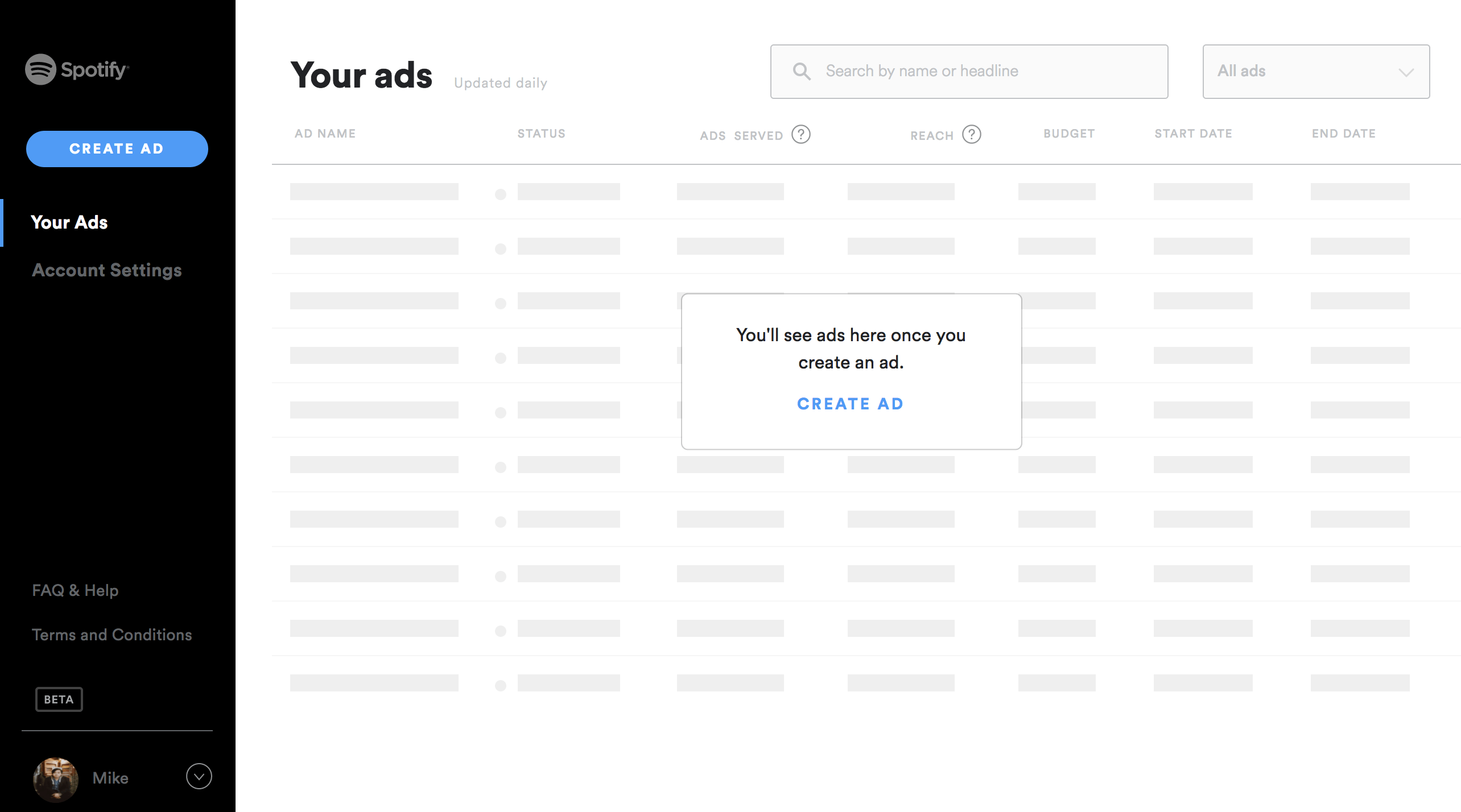Spotify, in its early days, was the proverbial rocker of the boat. Providing a freemium music streaming service, the company completely disrupted the music industry by offering an unprecedented amount of music to the public without asking for a penny, initially. Now, Spotify still finds itself high in-demand and even a household name. But streaming services have become so commonplace that they no longer have claim over the title of “disruptive force.” This means they have had to find something else to differentiate themselves.
Luckily, they now wield unparalleled value in their abundance of music user data. According to CMO Seth Farbman, Spotify builds all of their systems from the ground up as it defines itself as a tech company. This positioned the company to become a completely different force in the industry. Here, we can dive into what valuable lessons and tools can be taken from Spotify’s music scene shakeup.
See what #B2B marketers can learn from @Spotify #BigData strategy: Share on XGet Big Data And Find The Value In It
“Spotify’s data set—100 billion events a day over 10 years, and over 140 million monthly active users”
– Adam Bly, VP of Data at Spotify & founder of Seed Scientific
In 2015, Spotify acquired data analytics provider Seed Scientific. With this acquisition, they were able to finally mine the piles of data and find usable points to interact with their customer base in a whole new way. Data places the human variable in a box that can be better predicted, positioning a company to serve the customers’ needs at a higher level of specification. With an absurd amount of data, the Swedish company’s approach is simple: create a personalized experience never seen before.
 Why this matters to your company:
Why this matters to your company:
Find out as much as you can about the companies you are working with and the PEOPLE you are communicating directly with. Business-to-business interactions can be cold and impersonal. Like with any relationship, the more you know about the person on the other end the more likely a bond can be built and work can become more fruitful.
Use Big Data
 The standard for personalization has been raised. In 2015 they acquired the power of data and in 2016 they began to finally wield it. Spotify launched their “Thanks 2016. It’s Been Weird.” campaign towards the end of November. The brilliance lies in the fact that Spotify took a grim sentiment shared by many across social media and plastered it on each piece of the campaign, uniting their audience against 2016 as their common enemy. The goal was to strengthen their brand as well as encourage engagement and interest.
The standard for personalization has been raised. In 2015 they acquired the power of data and in 2016 they began to finally wield it. Spotify launched their “Thanks 2016. It’s Been Weird.” campaign towards the end of November. The brilliance lies in the fact that Spotify took a grim sentiment shared by many across social media and plastered it on each piece of the campaign, uniting their audience against 2016 as their common enemy. The goal was to strengthen their brand as well as encourage engagement and interest.
Their data allowed them to create hilariously specific ads that expose the humanity in its users’ ridiculous music habits. These silly facts tell us about the user culture they try to support without selling anything else to their audience. The innocence of many of these messages made this campaign relatable and compelling to the people which led to the conversations all over social media. Big Data became the cornerstone of their marketing strategy.
Why this matters to your company:
After finding data on the companies and people you work with, you should take this new information and use it to create as personalized an experience as possible. The more you can make your client feel important the more likely they will continue to do business with you. The key takeaway is that data-driven marketing can provide for a unique message that can interest and retain clients through a personalized display of recognition.
@Spotify creates a personalized music streaming experience. Explore how! Share on XLet Them Help Themselves
Spotify has recently created two platforms for both Brands and Artists. Here we can look into their way of practicing effective B2B efforts. Instead of taking responsibility for all parts of their business they have delegated some of the easier tasks to their clients. As the saying goes,”teach a man how to fish…”
Spotify for Artists
 This platform used to exist as Spotify Fan Insights in 2015. This platform showed the artist who was listening to their music and where. Defining fan engagement, monthly listeners and displaying many other rankings, artists were able to have a grasp of where their fans were located around the world. For some artists these insights gave them the courage to travel to new places and set up shows. Since then Spotify Fan Insights has involved into Spotify for Artists that adds a few “Facebook Page” UX-like elements. Now artists, once verified, can update profile images, biographies and promote playlists. This year Spotify also released an app version of this platform on iOS.
This platform used to exist as Spotify Fan Insights in 2015. This platform showed the artist who was listening to their music and where. Defining fan engagement, monthly listeners and displaying many other rankings, artists were able to have a grasp of where their fans were located around the world. For some artists these insights gave them the courage to travel to new places and set up shows. Since then Spotify Fan Insights has involved into Spotify for Artists that adds a few “Facebook Page” UX-like elements. Now artists, once verified, can update profile images, biographies and promote playlists. This year Spotify also released an app version of this platform on iOS.
Spotify for Brands
 Expanding from their business with artists to business with other SMBs, Spotify has built Spotify for Brands. This platform offers more information than the artists’ platform. Here companies find education on the importance of having an audible aspect to their brands and various success stories of other businesses. More specifically it is a place to create audio ads to stream through Spotify’s new Ad Studio. There are nearly a dozen different ways to engage with audiences on Spotify’s streaming service. Much like their promotion of user generated playlists, they show off their generated content from other businesses through Spotify for Brands.
Expanding from their business with artists to business with other SMBs, Spotify has built Spotify for Brands. This platform offers more information than the artists’ platform. Here companies find education on the importance of having an audible aspect to their brands and various success stories of other businesses. More specifically it is a place to create audio ads to stream through Spotify’s new Ad Studio. There are nearly a dozen different ways to engage with audiences on Spotify’s streaming service. Much like their promotion of user generated playlists, they show off their generated content from other businesses through Spotify for Brands.
Why this matters to your company:
Doing everything for a client just leads them back for the same tasks over and over. Monotony isn’t healthy for any relationship. Show them a skill or two and all of a sudden they have a better understanding of what they can or can’t do. Not only that once they have some insight on your side of the business, communication can only become clearer and more productive. Even the most minute delegation of tasks can optimize your business. In addition keeping clear statistics and data on the performance of your client keeps them active and interested in bettering business.
Final Thoughts
Spotify shows us that marketing becomes a different beast when the proper data is fueling it. When there is an emphasis on playing smart, you can approach campaigns with realistic and precise goals. Engagement, conversion rates and communication becomes clear. Data driven marketing can become a differentiator by through its level of potential personalization. The more you know about your customer the better you can serve them and communicate with them.



